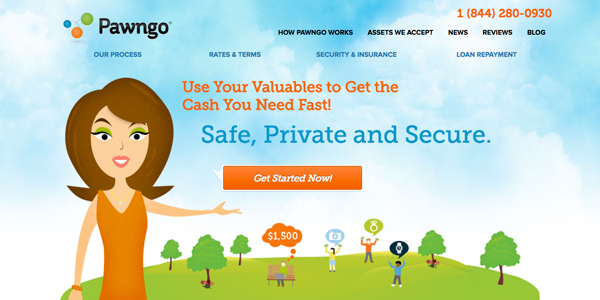Is It Time For A Rebrand? 4 Things To Consider Before Making The Change
You’ve heard other companies talk about it, and it sounds like it might be the magic bullet your business needs to steer the ship in a profitable new direction: a rebrand.
It’s true that if executed successfully, a rebrand can have a major and direct impact on your bottom line. According to global management consulting firm McKinsey, companies perceived as having a strong brand outperformed those perceived as having a weak one by 20% in terms of earnings.
Similarly, a study published in the Open Journal of Business and Management found that brand image is the “dominant impact factor of consumption decisions,” with strong brands weighing heavily on the customer’s choice to buy.
But thinking of a rebrand as a magic bullet that’ll solve all your marketing woes isn’t the right approach. In fact, if executed poorly, a rebrand can do more harm more than good.
If you’re thinking of rebranding, it’s necessary to carefully weigh up the pros and cons. Here are four things to consider before taking the plunge into a full rebrand of your company, product or service.
4 Factors to Consider Before Diving into a Rebrand
1. What’s the reason behind the rebrand?
When deciding whether a rebrand is the right solution for your business, it’s important to examine the reasons you’re considering it. What problem are you hoping to solve?
A rebrand is a major undertaking and should have strong, specific justification behind it. Some worthwhile reasons to rebrand include:
- Damage to your company’s reputation
- Confusion with another brand or lack of differentiation from competitors
- New ownership
- A shift in your target audience
- A change in your key product, service offering or brand strategy
While this isn’t an exhaustive list of reasons to rebrand, you’ll notice that they all have one thing in common: they’re meant to help the company navigate a transition and mark a clear shift from ‘before’ to ‘after.’
If the reason you’re thinking of rebranding is simply because you want to increase profits, or, if you’re unsure why you want to rebrand, it may not be the best course of action.
In 2016, event ticketing company StubHub rebranded in an effort to set itself apart from the growing crop of on-demand ticketing apps3.

Image via StubHub
While other services focus on the transaction of purchasing a ticket, StubHub decided to shift its focus to the experience of attending a live event. Through a reimagined logo and global marketing campaign, StubHub repositioned itself as a provider not just of tickets, but unforgettable experiences and memories.
Related: Rebranding: 15 Do’s and Don’ts for Brand Success
Todd Hills was in the pawn shop business for 25 years when he had an a-ha moment. Why not take the pawn shop business model online to the internet?
He and his partner built and launched InternetPawn.com, which was—you guessed it—an online pawn shop. But they quickly encountered a major barrier. Internet users, they discovered, were far less willing to share the kind of sensitive personal information needed for a pawn transaction compared to customers walking into a bricks-and-mortar shop.

Image via Pawngo
They needed to rethink their service model. In 2011 they underwent a rebrand and relaunched the site as Pawngo with an interface that is a lot more friendly and holds the user’s hand during registration and carefully explains each step in the process4.
By rebranding, they gave their company its own distinct brand personality and helped overcome a major customer obstacle.
If you’re considering a rebrand and are not sure where to start so you can successfully pitch, price and position your brand to be the ideal choice for your target market, then take a look at our Persona Brand Building Blueprint™ Mastermind. It’s a highly interactive fast-track programme where you work intensively on your brand under our direction and tutelage, alongside other like-minded peers and senior managers, from non-competing sectors, over the course of two days. Discover more about the Persona Brand Building Blueprint™ Mastermind here.

Build your standout brand at the Persona Brand Building Blueprint™ Mastermind with Lorraine Carter
2. How does my actual brand perception compare with my desired brand perception?
When people hear your brand’s name, what type of brand identity do you want them to think of? You might have a list of adjectives for your intended perception, like ‘playful’ or ‘trustworthy’ or ‘affordable.’ The question is, what is it that people really think internally and externally when they hear your brand name? Are these perceptions aligned or completely at odds with each other? A brand audit health check will help you uncover the real perceptions around your brand and give you invaluable insights on where and how you may need to implement change to grow your business.
If you’d like to give your brand a health check yourself then our brand audit health check programme, the Auditing Analysis Accelerator™ is the perfect solution for you. You can find out more here and watch a free preview here of how to give your brand a health check yourself.

Audit your brand now so you can identify where and how to get the most benefit and ROI from your rebrand.
Alternatively, if you’d like us to conduct your brand audit for you, and/or rebrand, and would like to leverage our experience and expertise then send us an email to [email protected] or give us a ring T: +353 1 8322724 (GMT hour 9:00 – 17:00). We’d be very happy to speak with you.
Let’s take it you’ve established what people actually perceive about your brand through a brand audit. Sometimes it’s a tough pill to swallow, but the two perceptions (the one you want and the one people actually have) are often at odds, as evidenced in our experience of over twenty years of conducting brand audit health checks. If they’re worlds apart, it’s a strong case for a rebrand.
Hobby Lobby International was a mom and pop hobby shop started in the 1960’s in Tennessee. It’s not the same as Hobby Lobby, the massive crafting supply chain, but most customers didn’t know that.
For decades, the small business simply dealt with the confusion by explaining to customers they weren’t affiliated with the big-box chain… until 2012. That’s when blowback from Hobby Lobby’s Affordable Care Act lawsuit began to negatively impact Hobby Lobby International’s business5.
Hobby Lobby International knew they had a major perception problem.
The company executed a full rebrand that ended in the unveiling of its new identity, Hobby Express6. With a new name and new branding, the company cleared up the confusion surrounding the craft chain and resolved its perception issue, while also protecting its reputation.

Image via Hobby Express
Related: Rebranding Strategy, Why Your Rebrand Must Embrace Storytelling
California Tortilla, or Cal-Tort, is a Cal-Mex restaurant chain that started with two locations in Maryland. The taco joint quickly became a fan favourite of locals, known for funky décor and upbeat 80’s music. But when the chain began to franchise, growing beyond its two original locations, it encountered an identity crisis.

Image via California Tortilla
Though the restaurant prides itself on using only fresh, high-quality ingredients, its customers knew it more for the kooky atmosphere than the quality of the food. This was the perfect motivation for a rebrand.
Cal-Tort held onto its authentic, quirky voice and fun vibe, but rebranded with a new logo, redesigned store interior and updated marketing materials that focused primarily on fresh, superior ingredients7.

Image via California Tortilla
The rebrand did its job, as today the chain is comprised of more than 50 locations in seven states.
Related: Brand Audits: Why You Need Them and How to Perform One
3. What resources do I have at my disposal?
If you think a rebrand is as easy as paying a graphic designer to whip up a new logo, you’re sorely mistaken. While a logo redesign is one component of a brand refresh, it doesn’t constitute a rebrand.
A rebrand is a multi-layered approach to fundamentally changing some critical aspect or aspects of your company, product or service which may include your business name, culture, brand values, vision and mission, value proposition, positioning, tone of voice, brand collateral and more.
One important thing to consider when approaching a rebrand is your company’s ‘why.’ Has it changed from the time you started the brand?
Executing a rebrand requires the commitment of personnel to oversee the process, provide direction and feedback, and eventually, inform your customer base of the change in an effective way.
Furthermore, you need a budget to pay for it all. Some of the costs associated with a rebrand may include research, focus groups, consulting fees, contractor expenses, photography, video, copywriting, production of brand collateral, advertising campaigns, and legal and trademark fees, among others.
Before jumping into a rebrand, make sure you’re fully aware of all the costs and commitments that will be associated with the process from start to finish.
A rebrand needs the whole team on board and fully committed to make your rebrand a big success. If you want direction and support empowering you and your team to transform your brand, codify it, map it out and create your rebranding strategy so you stand out (for the right reasons) and increase your sales then the Persona Brand Building Blueprint™ Mastermind is the perfect fit for you — tailor-made as a bespoke in-house brand building intensive. It ensures you’re empowered to make your rebrand very successful and, most importantly, get a return on your investment.
At the end of your two-day Persona Brand Building Blueprint™ Mastermind you leave with absolute clarity on your rebrand and your fully documented rebranding strategy ready for implementation in your business or organisation.
Want to know more?
Give us a call T: +353 1 8322724 (GMT 9:00 – 17:00) to discuss your rebranding preferences or send us an email to [email protected]
Related: 7 Ways A Brand Refresh Will Make You More Productive And Increase Sales
4. What’s my timeline?
The last item to consider before taking the plunge into a rebrand is your timeline. This is where you’ll need to be really honest with yourself: are you looking for a quick and fix, or are you truly willing to invest the time it takes to execute a rebrand properly?
When done correctly, an effective rebrand can take a nine to twelve months or more, depending on the scale and depth of change required.
Take Google, for example. The internet giant’s 2015 rebrand was years in the making. Though its new visual identity was hashed out during an intense weeklong design sprint, the vision behind the rebrand evolved for many years and involved hundreds of team members as Google zeroed in on its true identity as a technology innovator.
If months or years sound like an eternity, a brand refresh may be a more appropriate solution.
Related: Rebrand or Refresh? Which Route to Choose, That is the Question
A rebrand can result in greater brand loyalty, a more targeted marketing strategy and most importantly, greater earnings, but it comes with its fair share of challenges. To make the process a smooth and successful one, and to avoid the pitfalls of an unsuccessful rebrand, take the time to consider if it’s truly the next best step before taking the plunge.
Related: Rebranding Strategy, The ABCs of Rebranding Google
Questions to consider
- What’s the reason I’m considering a rebrand?
- What is my perceived brand identity in the eyes of my customer? Does it match with my desired brand identity?
- Am I fully aware of the financial and personnel resources needed to execute a rebrand, and do I have them?
- Would a brand refresh be a better fit for my needs than a full rebrand?
- What’s my timeline for a rebrand or brand refresh?

Audit your brand now so you can identify where and how to get the most benefit and ROI from your rebrand.
[1]
https://www.forbes.com/sites/mckinsey/2013/06/24/why-b-to-b-branding-matters-more-than-you-think/#440d2ef259dd
[2]
https://file.scirp.org/pdf/OJBM_2015011615441425.pdf
[3] http://www.adweek.com/brand-marketing/stubhub-wants-you-stop-microwaving-sad-dinners-and-experience-events-instead-171224/
[4]
https://www.fastcompany.com/1757976/groupon-founders-reinvent-pawnshop
[5]
https://www.washingtonpost.com/news/the-fix/wp/2014/03/24/heres-what-you-need-to-know-about-the-hobby-lobby-case/?utm_term=.40104bd6a91f
[6]
https://www.nytimes.com/2014/05/08/business/smallbusiness/a-small-brand-tries-to-escape-the-confusing-shadow-of-a-big-brand.html
[7]
https://www.entrepreneur.com/article/231636





Leave a Reply
Want to join the discussion?Feel free to contribute!